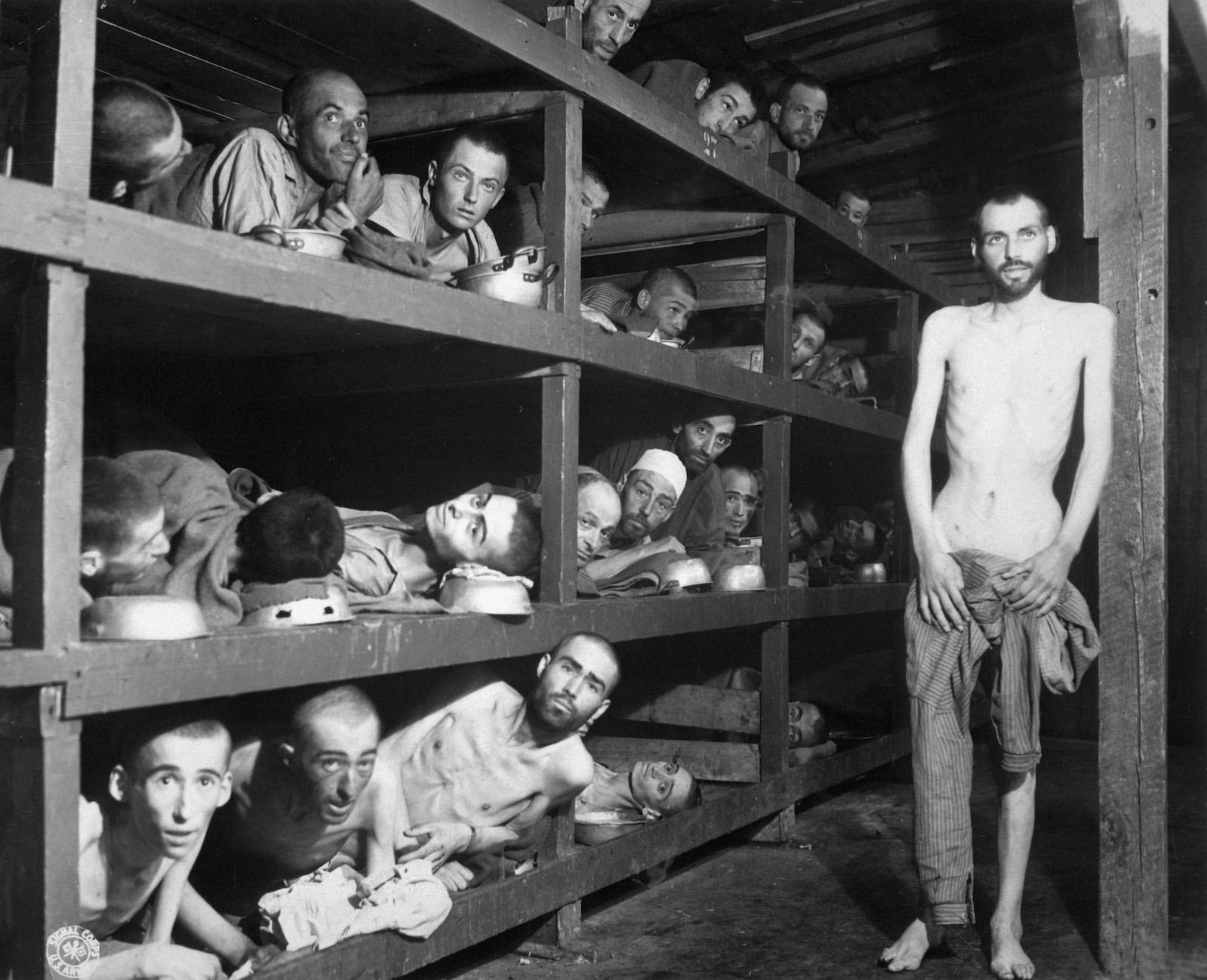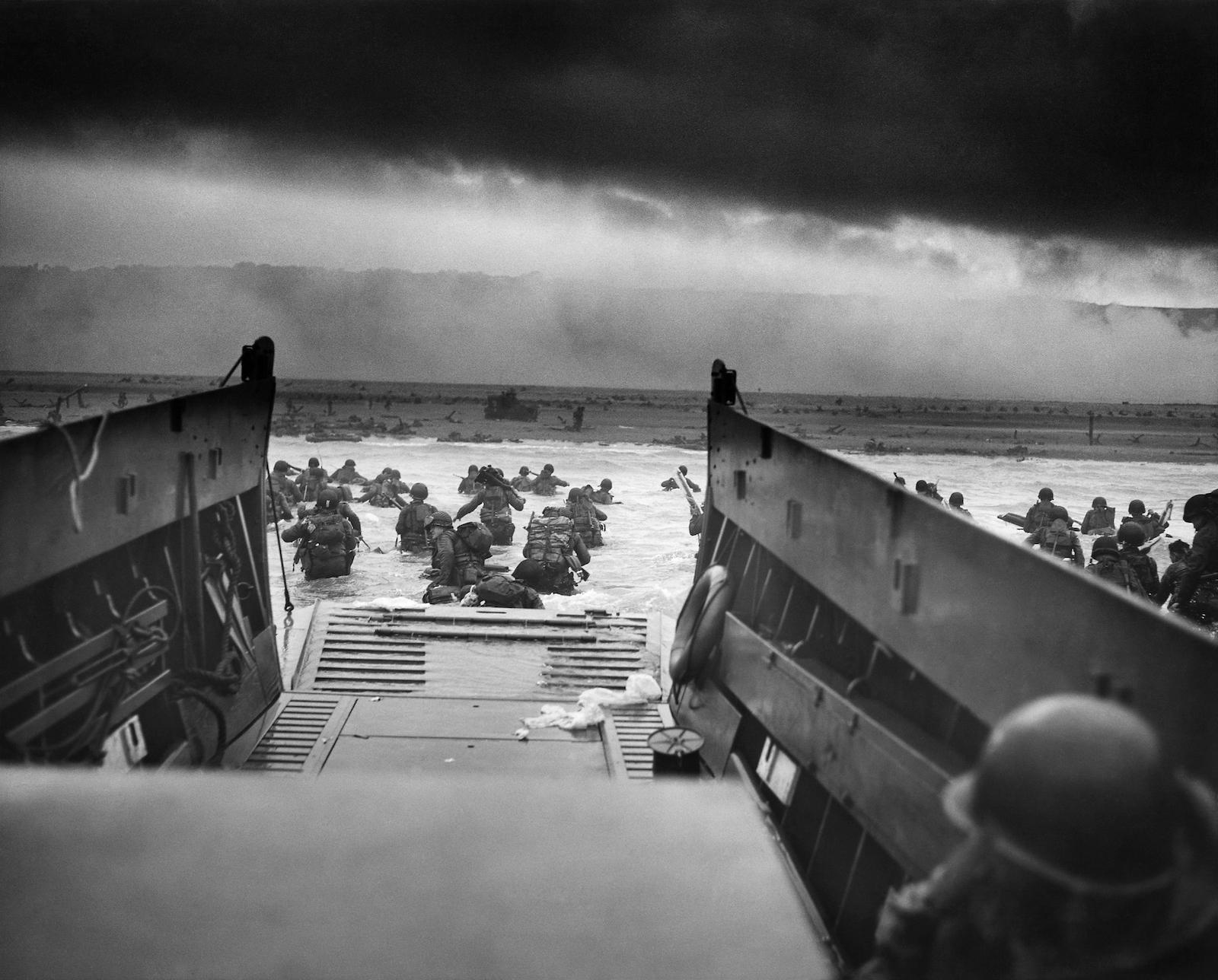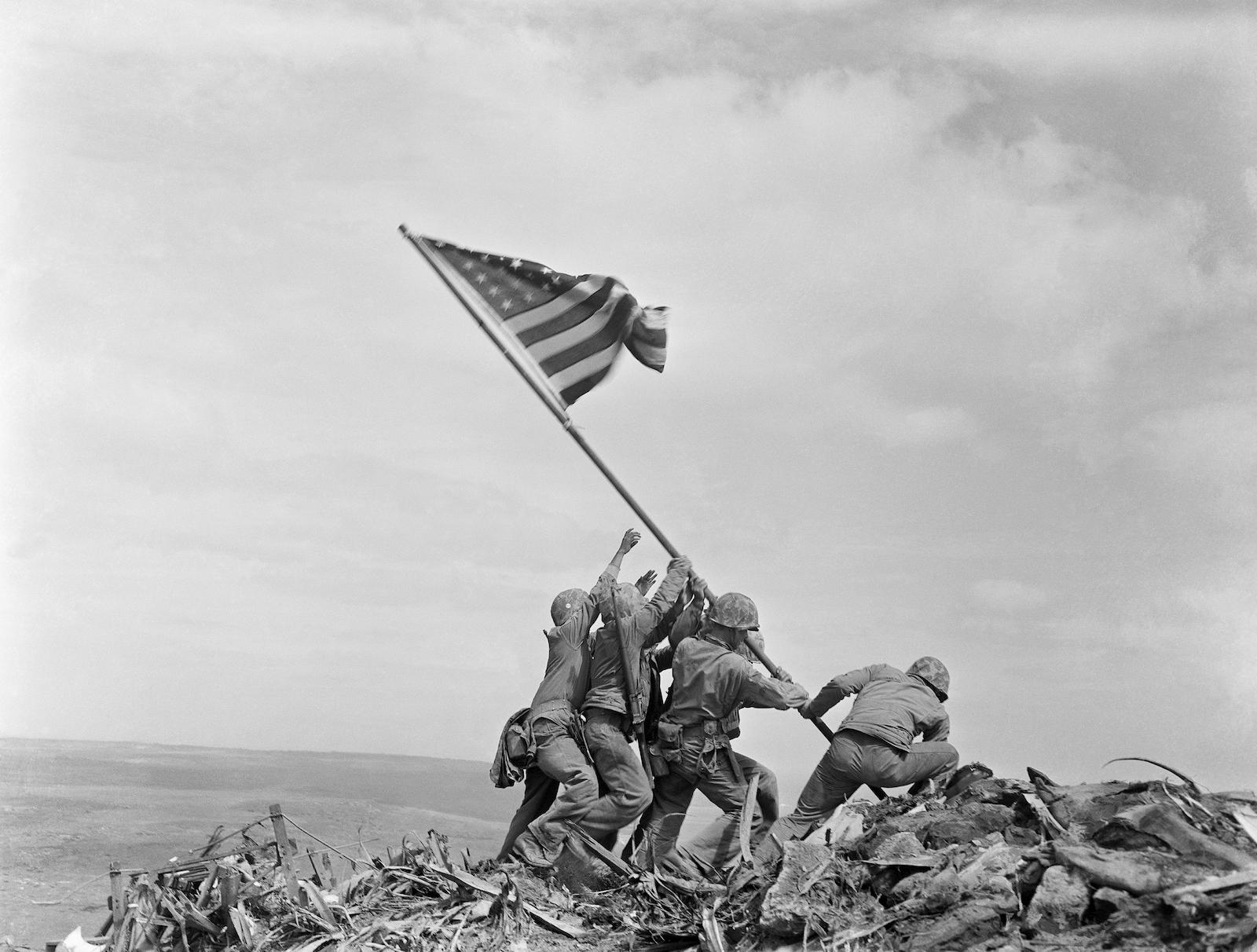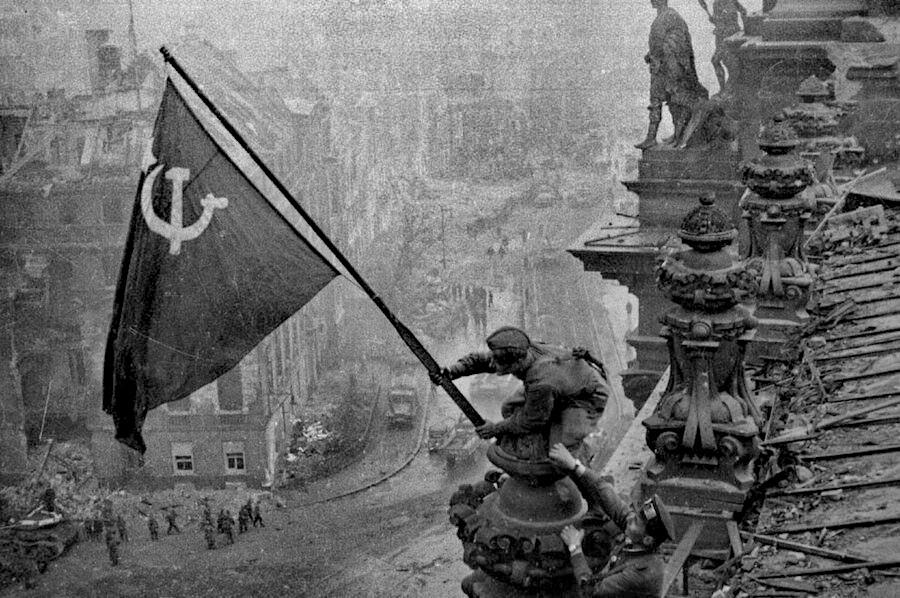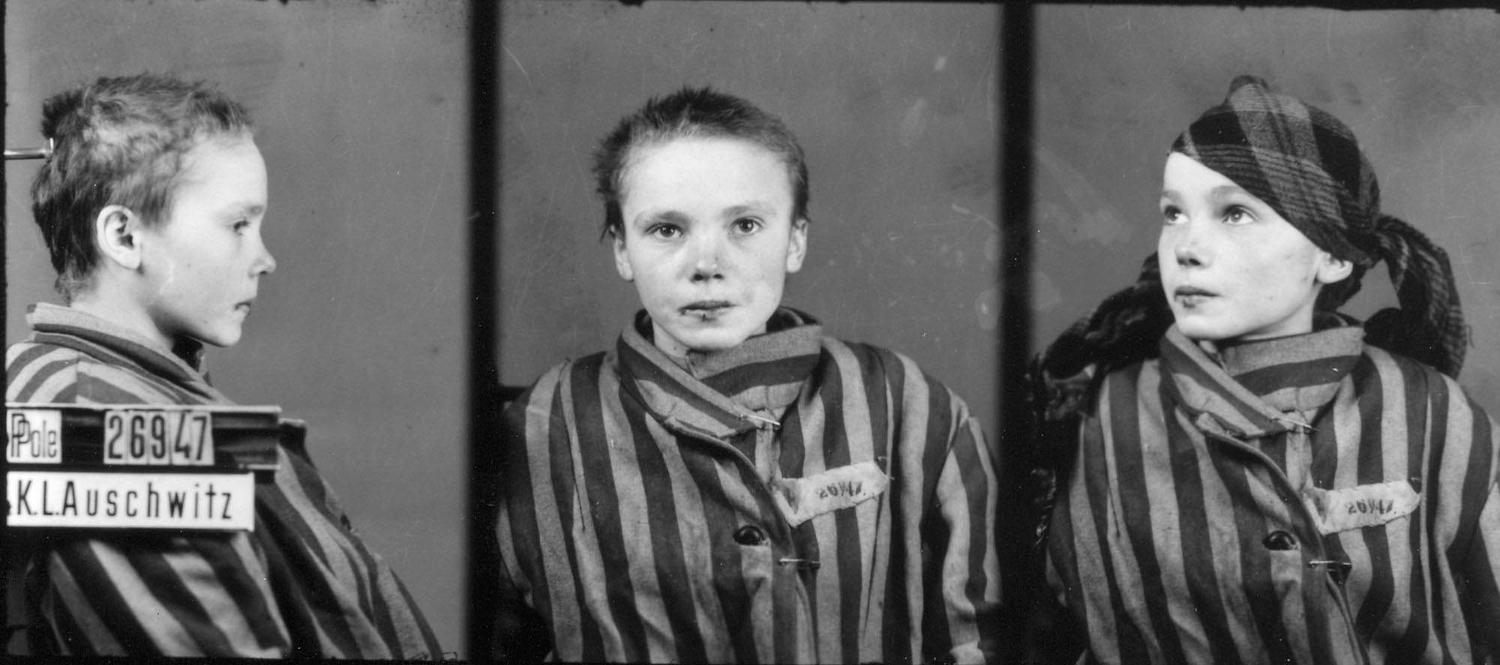In terms of photographic production, WWII saw the most extensive use of professional, military, and freelance photographers. Indeed, the concept of war photographer as we intend it today was born during this conflict. Names such as Robert Capa, George Silk, Margaret Bourke-White, and William Eugene Smith, became popular in the pages of magazines and newspapers and set a standard for those to come. Technology had also evolved since the 1920s. Photographers could now rely on small cameras such as the Rolleiflex, the Contax rangefinder, and the Leica. Free from cumbersome equipment and long exposure times, reporters could finally photograph active combat. For instance, the blurred images taken by Robert Capa on D-Day were made with a Contax II and catapulted the world into the freezing waters of Normandy and the chaos of warfare.
Yet, not all iconic WWII photographs were of ongoing clashes. Two of the most famous photographs immortalized the end of fighting and the stillness of victory: Raising the Flag on Iwo Jima by Joe Rosenthal and Raising a Flag Over the Reichstag by Yevgeny Khaldei.
In February 1945, the US army captured the Japanese island of Iwo Jima. To signify the takeover, a group of marines, followed by the photographer Sgt. Louis Lowery, climbed Mount Suribachi to raise the American flag. Due to the heavy Japanese firing, Lowery had to take cover, but slipped and broke his camera. Luckily, another photographer, Joe Rosenthal, was just behind hoping to take a few shots from the summit. Through a combination of luck and photographic instinct, Rosenthal took the photograph that eventually became an embodiment of the bravery of the US troops.




